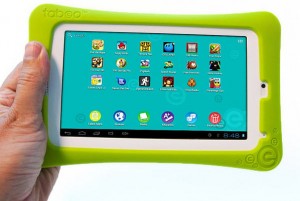For the Cost of a Bicycle, Parents Can Purchase Kid-Friendly Tablets
By emeadows
December 18, 2012
December 18, 2012
For around $200, parents can buy their kids child-appropriate tablet computers. According to The New York Times, children “understand that this single device is a million-channel TV, music collection, game machine, camera and e-book library, and a way to socialize with friends.” The article reviews 21 different kid-friendly tablets, including the $150 Android-powered Kurio 7, MEEP and Tabeo tablets. “The Nabi 2 costs a bit more ($200) but has a noticeably better screen,” suggests the article. “The Nabi Jr. ($100) is smaller and can double as a baby monitor.” Continue reading For the Cost of a Bicycle, Parents Can Purchase Kid-Friendly Tablets



